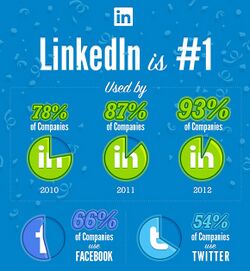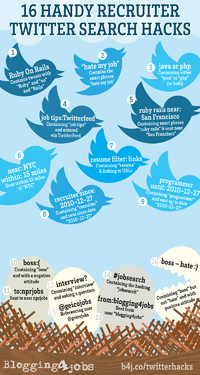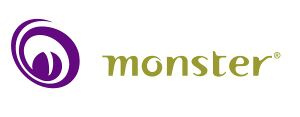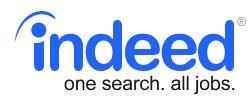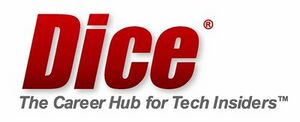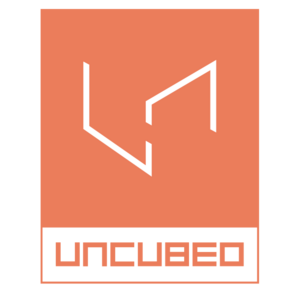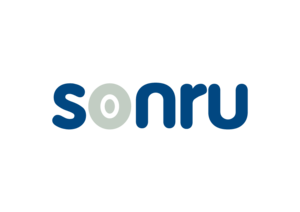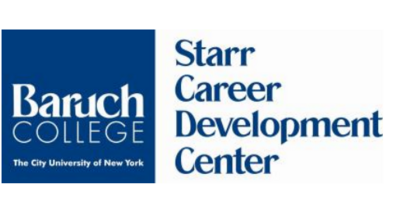Social Media in Applicant Screening
There has been an increasing number of employers using social media to screen applicants as potential candidates, with 60 percent of employers using them today. The reason for this being that social media is now widely used by a large portion of the population and can provide greater insight on a candidate without having met them in person yet, at a low cost to the employer. There is a lot of information an applicant can expose of themselves on social media and this is what employers want to exploit. Employers seek to identify the validity of an applicant's resume and if their qualifications and statements about themselves are accurate. These employers want to draw inferences on an applicant's character or personality through social media as well. This social media screening process can determine if the applicant moves on in the hiring process or not.
Negative Impacts
There have been several reasons employers have rejected a candidate for further review when looking at their social media. 49% of hiring managers have found reasons not to hire a candidate, this includes:[1]
- Provocative or inappropriate photographs, videos or information – 46%
- Information about candidate drinking or using drugs – 43%
- Discriminatory comments related to race, religion, gender, etc. – 33%
- Candidate bad-mouthed previous company or fellow employee – 31%
- Poor communication skills – 29%
Beneficial Outcomes
However, there have also been positive outcomes when hiring managers have looked at an applicant's social media. About one third of employers have found information that has led them to hire a candidate, this includes:[2]
- Candidate’s background information supported job qualifications – 44%
- Candidate’s site conveyed a professional image – 44%
- Candidate’s personality came across as a good fit with company culture – 43%
- Candidate was well-rounded, showed a wide range of interests – 40%
- Candidate had great communication skills – 36%
Assessing the Fairness
In the wake of social media screening, there has been concern regarding the fairness of this process. There isn’t a level playing field for all candidates due to the nature of information provided on these sites. First off, the information provided on social media can vary across applicants/users. There may be someone who shares every little aspect of their life on social media but there may be someone else that limits their use and shares very little information, how would these applicants then be compared? It has been found that when someone is not able to be found on social media, they are negatively affected in the hiring process, being less likely to be interviewed or are discarded as a candidate. Another concern involves discrimination that can result from viewing a profile, which includes a person’s picture. There are many protected classes and there are other laws that have been established to deter discrimination but there may be unintended discrimination that occurs in this process. A profile picture and content can give away, race, color, religion, sex, national origin, age, disability status, among other things that can lead to generalizations about someone and potentially lead to discrimination. Lastly, there is a concern regarding if the information posted on social media are valid predictors of job performance and also whether this information is relevant to the job itself.
Social Media Screening and Privacy
There has been an increasing concern regarding privacy today, and allowing employers to look through a candidate's personal social media site may be perceived as an intrusion of privacy. Social media is something that can be used personally by a user, without the intention of having outsiders the user has not permitted, to access it. This process can also be perceived as being unrelated to job specific tasks or performance, as people post things outside the place of work where employers should have no jurisdiction over. There may also be the concern that social media is used as a form of expression and free speech. However, information that can be easily available when searched online does not constitute an invasion of applicant privacy itself.[3] It is when an employer asks for passwords to these sites from potential candidates and even “friending” a potential candidate, hiding their true intention, where there can be a breach of privacy. Human Resources practitioners need to create clear policies regarding social media screening to address privacy concerns and other issues.
Social media is also being used in other aspects of the workplace, for current employees. There may be monitoring of social media use of current employees and they may receive backlash for content posted online. This has occurred even if it was not done with company property, and took place outside of work. More than a quarter of employers have found content online that has caused them to reprimand or fire an employee. Courts have generally ruled that employees do not have a reasonable expectation of privacy in the workplace, especially if they are using company property or if the employer has communicated to the employees that they may be monitored.[4] Companies have the right to monitor emails and other online activity within the workplace, and employees generally agree with this. Social media is now used as a platform itself to attract and recruit candidates. There may be increasing use of social media for various aspects of the workplace as well as other areas, and the implications for this need to be addressed.
Employers are adapting to the new ways of performing background checks on potential new hires by using social networking platforms. We are aware of what we can do on social media websites like Facebook but what we are unaware of is how it can affect us when it comes to our livelihood. Employers have begun to look up potential employees’ social media profiles to see what type of person they are outside of work. Employers are looking to see the type of content you are posting for the whole world to see. Depending on the content that you share with everyone, it can either make or break you when it comes to receiving an acceptance letter or a rejection. That seems reasonable to a certain extent. When an employer is looking to hire someone, they want someone who is not only going to fit in with their company but also someone who is going to be a good representation of the company because “know it or not, wherever you work, you represent that company to outsiders.” [5] Even then, this is an instance of invasion of one's privacy.
Now let's say that you found out that the company you had sent your application in to does a screening check of your social media accounts, so you decide to take action. You have the option to hide everything you have from the public which may be a large task to complete if you have years of posts on your account. The other option is to delete your social media account which may make you think that now you are unsearchable. The truth is, “you can never remove yourself completely from the internet, but there are ways to minimize your online footprint, which would lower the chances of your data getting out there.” [6] It is not exactly the most beneficial to someone had they removed their social media accounts or deleted all their posts which is time-consuming. It may even cause you to lessen your chances of a recruiter finding you if you remove your online footprint as you are not as prevalent on the world wide world as you did prior to trying to remove yourself in the first place.
New Media in Recruitment
Advancements in technology are affecting parts of different industries and the way they approach situations. For instance, the development of new forms of media has caused advertising companies to shift away from traditional forms of advertising like print newspapers. These new technologies also assist us even in a corporate setting. In the NPR article, Social Networking Technology Boosts Job Recruiting by Frank Langfitt had said, “social networking technology is absolutely the best thing to happen in recruiting.” [7] The main social networking platform used by professionals is known as LinkedIn. This platform allows employers and potential employees alike the ability to look up any company or any specific characteristics of a candidate and the platform will show all the results in one location. Not only can LinkedIn be used to locate job postings or find new hires, but it is also a social site where professionals of every industry can share their experiences and possibly even lend some advice to their community of connections, which is similar to a friend group on Facebook.
Screening for candidates to find a true fit within an organization is one aspect of recruiting. Recruiters are responsible for finding the best candidates for open positions using test screenings or matching candidates with job requirements. With greater access to media, employers have a much easier time finding potential employees without having to search extensively for possible candidates. This makes it easier to find potential applicants and to pre-screen applicants while saving time and other resources. The recruitment process involves several stages such as defining the role, attracting applicants, managing the application and selection process, and scheduling the interview. Everyone involved in the recruitment process should be equipped with the appropriate knowledge and skills about what the position entails.
In addition to matching the best candidates with the job position, recruiters and line managers must understand the importance of diversity in the selection process. The process should be clear of any bias and ensure that no unique talent is being looked by upon. Those involved in the recruitment process should understand legislation to prevent bias and discrimination from occurring either intentionally or unintentionally. For example, CIPD supports the Recruitment protocol launched by the Employers' Forum on Disability. [8] There are also laws such as the Civil Rights Act of 1964 that prohibit discrimination on the basis of race, color, sex, religion, or national origin.
Digital Marketing in Recruitment
Recruitment is very much a candidate-driven market job. Companies want to attract the best candidates using various strategies like branding, outreach, etc. It is very similar to how a company wants to market its services or products so that they can attract customers. However, the practices used in the recruitment process are not as optimized as marketing practices. Recruitment practices although have gone under changes but they haven’t transformed as greatly as marketing practices.
The growth of digital technology has transformed all sectors. If we look at marketing strategies used a decade ago, these strategies were more outgoing. Marketing consultants would go about attracting their potential customers by email, cold calls, participating in exhibitions, doing a mega product launch, etc. Today, most of these offline strategies have become secondary. Companies are using digital marketing methods to reach their potential customers. Strategies like SEO (Search Engine Optimization), CPC campaigns, programmatic marketing, content marketing, viral marketing, conversational chatbots, etc are becoming the spearhead digital marketing strategies for companies.
The recruitment process comprises of four main stages. Candidate sourcing, candidate screening, interviewing and hiring. Candidate sourcing is heavily marketing like activity. It is about driving more and more candidates to apply for open job positions in your company. As part of candidate sourcing, you need to create interest in the candidate’s mind, you need to build awareness about job openings in your company. You need to make sure of great candidate experience.
The biggest advantage of using digital marketing methods for recruitment is you get quality job applications. Recruitment marketing saves a huge amount of time for recruiters who otherwise would go about finding candidates on job boards. Recruiters spend most of their time chasing non-qualified, non-interested candidates. Instead, recruiters can make their candidate sourcing process more inbound where candidates can easily find job openings and the job application process makes sure it identifies quality candidates. Adopting to recruitment marketing methods actually makes your hiring process more data-driven which assures better success in closing job positions. [9]
LinkedIn is a social network designed for people to build a professional profile and connect to people within their network. It is very popular in professional ability. It has helped many professionals finding jobs and connect with other professions. It is able to show you who is the 1st connection in your network, people who you are directly connected to, 2nd connections, who are connected to someone who you are connected to, and even 3rd connections. [10] In addition to allowing you to connect with those in your professional network, LinkedIn also makes it easier for recruiters to look for qualified candidates for a position. If a recruiter is looking for someone with specific experiences, they can look for those experiences among relevant LinkedIn profiles to identify who are the best candidates. They can even send them email messages to express their interest or just look at applicants for the position. Large firms and companies also have profiles on LinkedIn, where they are able to post updates, events, or job openings for people to apply to. Basic accounts are free to create, giving users nothing to lose other than the chance to potentially be found online that can ultimately help them in a job search. [11]
LinkedIn has also served as an inspiration for many users. Many users look at other professionals' careers and are impressed with what they see. They look to peers for guidance and advice. let alone connections with the goal of ultimately getting an Internship or job. Besides recruiting and looking for potential jobs, LinkedIn also serves as a platform to build your network. Users can easily search for a professional who has experience and knowledge in the area that they would like to work in or learn more about. By connecting with them and sending a short message introducing yourself, people can ask to meet for coffee or just have a quick chat. This serves as a way for LinkedIn users to meet new people while learning from a successful professional in their field of interest. [12] Besides meeting new people and learning, some interactions could lead to job referrals and employment opportunities. Even though LinkedIn is viewed as a professional network, it is ultimately a social media platform with the ability to connect people together.
The article, “How Social Media Can Affect Your Career."[13], shows that strategic use of social media can help you land some good opportunities in your respective career. In terms of LinkedIn, it is always best to connect with alumni of your school and be focused on growing your network in your given field. Many great opportunities for work are given through a connection that lands an interview which leads to a job. The business field, in general, is known for its lifestyle type of work, meaning that even getting coffee with someone is a business meeting to connect with someone that could benefit you in some way or form. If you are in the business field and you strategically use your LinkedIn to market yourself, you will end up in a great place. Some firms also recruit directly from LinkedIn, so having connections that work at these types of firms will benefit you.
Another great tool that LinkedIn offers is weekly emails with jobs that fit the skills of the individual. This tool helps job seekers because they don’t miss out on key opportunities. Before social media became a job search tool, job seekers would have to regularly check job boards and newspapers. Now, that step in the process is taken care of by LinkedIn. How does the site find jobs for users? A LinkedIn marketing leader, Lisa Dougherty, mentioned that the “LinkedIn algorithm seems to put a lot of emphasis on the words used in the headline when ranking people, so make sure it includes your key attributes, benefits your company offers, or your geographic location if you serve a specific area.” [14]This is important because this information is how the site filters jobs tailored to individual skills and accomplishments.
The days of searching for jobs on social media are changing. Now more than ever before, employment opportunities are coming straight through “InMail,” LinkedIn’s messaging platform. The article “Thanks to LinkedIn, My Dream Job Found Me (When I Was Not Looking)” by Dawn Edmiston [15] is about the dream opportunity that approached her through the site. Edmiston was happy in her current position and had developed her personal profile as a model for her students. Dawn wrote: “Every week, LinkedIn sends an email about ‘jobs you may be interested in’ based on your individual profile. Honestly, in March 2014, I was not interested in any job other than the one that I had at Saint Vincent College. But as I glanced at my inbox one night, the first job that appeared in an email from LinkedIn was for a Clinical Associate Professor of Marketing at the College of William & Mary (W&M). And as I read the description, I realized that it was not simply a job of interest to me, it was my dream job.” This is a true story that represents the power behind using social media for finding a job. Dawn’s profile consisted of personal experience, strong keywords, and a personal touch. These details enhance the profile and the results are incredible. It takes a bit of time and hard work, but having a fully developed LinkedIn profile could leave you with InMail from several desirable employers.
Although Facebook is designed as a social network for personal friendships and generally users do not keep in mind what employers would think of their profiles, some recruiters and employers often use Facebook to identify applicants. Many companies manage their own Facebook pages and are able to post job opportunities on their pages and accept applicants. A company known as Work4 specializes in social media recruiting and helps companies including Gap, AIG, and even Facebook recruit for entry-level positions. [16] Utilizing Facebook as a recruiting tool not only allows companies to send job opportunities, but it also allows their employees to spread the word throughout their network. If companies are able to reach their followers to let them know of job opportunities, then they are also able to view these profiles and see what type of impression this person would give off as an employee of the company.[17] Social media profiles such as Facebook allow employers and recruiters to make a first impression of job candidates, which is very important in a competitive job market.
Facebook is focused on being a social service and vehicle for all its users. Although this platform can have a sense of negative influence on its users because of the competition it creates between friend groups. People make social media a priority for themselves and therefore live a life dedicated to building their social media platform. In the article, “Influence of School Environment on Vocational Interest among Adolescents." [18] it talks about how being in a social environment as well as being involved in various areas of social media starts to influence the way you think, therefore influencing the vocation that you happen to choose. This doesn’t necessarily have to come through social media only but it can be through the groups of people we surround ourselves with.
One of the ways Facebook recruits people is by hosting events. Simply anyone can create an event and recruit people. With the help of technology and the functions of Facebook, people can host events and invited selected members. This is popular on Facebook, where users who received the invite will have a notification on their newsfeed and a link that directs them to the description of the event. They can choose to go, not to go, or maybe. There is a perfect way for users to host an organization and view the members and participants of events. This function of Facebook is very useful when it comes to recruitment and notifying people in your network or buddy list.
Twitter is a micro-blogging network that displays real-time posts. It has also emerged as employment searching and recruiting tool. With almost 646,000,000 [19] active users, the opportunities to create a network of people are endless. It serves as a tool that could connect people with similar interests to help employers find new employees.
Recruiters can use their personal or company account to post about open positions. Because tweets can only be 140 characters long, they should be clear and to the point. Hashtags should also be used to ensure that the job posting is searchable and can be filtered along with other types of tweets. A company’s Twitter account should expand the number of followers and create relationships with clients and potential job candidates. Such can be acquired by running a search with a specific word in the search bar. There are also endless characteristics that could help to narrow down the search. For recruiters, Twitter can help to advertise events that are happening at your organization that are job fair related. To maintain a Twitter account can require a lot of time and skill, therefore companies such as Jobvite or TweetMyJobs offer services that help to ensure that company tweets reach its audience. [20]
For those that are looking for a job, Twitter allows for potential candidates to build their profiles to suit and attract potential employers. It also helps to build a network of followers that could potentially lead to people that are looking for someone with your expertise. It is a great tool to research companies that are of interest and the professional contacts associated with them. With real-time news tweets, commentaries, and opinions on particular events could yield a conversation between those that are professionals in that industry. Twitter could be also a great tool to use to observe those, for whom you would like to work. Overall, a great tool to not only connect but also learn from others. [21]
Staffing Agency
A staffing agency can save your business time and money and find well-qualified candidates. A staffing agency is also known as a search, recruiting, or staffing firm or service is an organization that matches companies and job candidates. By registering with a staffing agency, you have the potential to make connections with multiple hiring managers looking to find the right people for their job openings. You can save time and find opportunities you may not be able to find on your own. [22]
Referrals
In addition to companies being able to access social media profiles, users are also able to learn from each other. Since a large number of companies offer referral bonuses to employees who refer candidates who get hired, there is more incentive for company employees to leverage their social networks to find the best candidates for an open position, since they are more likely to earn a bonus for their work. In addition to finding the best candidates, social media can also be used to identify candidates who may not be ideal for the company, with 1 of 3 hiring managers saying they found something on a candidate's social media profile that prompted them to eliminate a candidate. [23]
Besides the bonus some employees may receive from referrals, hiring managers, and those involved with the hiring process would consider resumes from those referred by a current employee over those who apply on their own from corporate websites. [24] Getting an interview as an applicant can be difficult, where those that are referred are twice as likely to be considered for an interview. As time went on, the number of employees hired by referrals have been increasing. Coming from someone that is currently an employee in the company, they tend to trust those more. Studies show that those hired from referrals are less likely to quit.
Recruitment Sites
Linkedin Job
It's no secret that LinkedIn is the top professional social networking site with 133 million users in the U.S. alone and reaching 200 countries and territories around the world. Per the Jobvite Recruiter Nation Survey, 87 percent of recruiters use LinkedIn as part of their candidate search. As a professional or student, it's a popular place to network and look for job opportunities; even former U.S. President Barack Obama once joked during a TV press conference that he would join LinkedIn to help him land a job after his term was up!
The issue is that if you're only updating your profile now and then, you're not fully utilizing all LinkedIn can do for you, which includes taking hours off of your job search. Below are some tactical tips on how you can leverage LinkedIn to its fullest to expand your professional network and land your next job. Follow these tips on how to leverage LinkedIn, and you'll be an employee of Gone Bananas soon:
- Keep your profile up to date. LinkedIn members with a profile picture are 14 times more likely to receive page views, while those who post skills are 13 times more likely to have profile views compared to those who don't, per LinkedIn's blog. There are more than 45,000 skills to choose from on LinkedIn to beef up your profile, so if you want Gone Bananas to notice you, make sure to regularly update your profile, add a profile photo, and include your notable skills.
- Be comprehensive about current skills and objectives. To ensure you're using LinkedIn to find a job correctly, don't leave anything out about your current skills and objectives. Use your headline to share your main objective if it makes sense and add all of your skills to your page. You don't want it to look like you haven't updated your page in a while, as recruiters and companies might pass you by if it does.
- Highlight recent experience. You want your recent experience evident to anyone who views your page, especially when you're actively engaging with connections and companies to land a job — which is the reason you're likely reading this post, after all.
- Update your headline. Your photo, name, and headline (which is listed below your photo) are the only items people see when they do a search. Your headline should stand out and highlight what you do or what type of position you're looking for. "HR professionals connecting employees with management" are examples of headlines that are clear and might grab attention when compared to plain-Jane headlines like "Chemical engineer in the public sector." Related: How Different Should Your LinkedIn Profile and Resume Be?
- Let people know you're available. If you can announce the fact that you're looking for a job, do so. Use your headline to make the announcement. For example, "Writer seeking businesses in need of a friendly ghost (or ghostwriter)" and "Petroleum engineer ready to strike oil and make you rich" might catch a recruiter or hiring manager's attention
- Build your network to the 1st degree. Your connections can exponentially increase your exposure and access to other connections. LinkedIn makes it easy to connect with people you know by importing your contact lists from sites such as Gmail.
- Research the companies you're interested in and follow them. LinkedIn makes it easy to find and follow companies. If you haven't already done so, make a list of the companies you'd like to work for and follow them on LinkedIn. This will help you stay in the know about company news and new positions as they become available.
- Use the Advanced Search. Use LinkedIn's Advanced Search option and do a search on your favorite companies. Find out who of your connections is associated with Gone Bananas, for example, and make a list. You can reach out to these people depending on their connection with the company. If they work there, you can ask questions about the company culture. If they are a client or service provider, you can ask what it's like to do business with them. Get creative and have fun doing your research so you can navigate how to best approach the company for a job when you're ready.
- Ask for an introduction. Once you're ready to reach out to Gone Bananas, you can ask your connection(s) to make an introduction to someone they're connected to within the organization.
- Look for alumni associated with your college or university. Doing a search for your college or university is a great way to connect with alumni who went to the same school as you. You can reach out to them and share this common interest to help you land your next job.
- Be more than a wallflower. Be active on LinkedIn, and as Weiner suggests, be authentic and current. Post any articles you write, videos you post, and so on, as updates. Get involved with groups and interact with others on LinkedIn. The more you interact and post as a professional, the more you'll be noticed and build recognition.
- Get involved in LinkedIn Professional Groups. Do an Advanced Search to identify professional groups in your area and get involved. This will help expand your network, show your expertise (when you engage in online conversations and answer questions that come up), and possibly connect you to the organizations you want to work for in the future. When researching groups, you want to participate in groups that have recent activity. Otherwise, you might be wasting your time if a group doesn't have daily or regular interaction online.
- Research your future boss and executive team. Before going in for an interview, you can use LinkedIn to research hiring managers and interviewers to find out about their likes, interests, and more. You can leverage this information during your interview to create relatability and show that you've done your homework.
- Network after business hours. According to Mashable, statistics show that only 8.33 percent of Americans use LinkedIn during working hours compared to other social media sites, such as Facebook (with almost 30 percent of people using it during work hours), indicating that you might get more interaction and exposure if you update your status, network, and connect with people and companies after business hours on LinkedIn. Test this out at different times of the day to see what works best in getting responses and other interactions.
Monster
Monster.com is one of the largest employment websites in the world, owned and operated by Monster Worldwide, Inc. In 2006, Monster was one of the 20 most visited websites out of 100 million worldwide, according to comScore Media Metrics (November 2006). It was created in 1999 by the merger of The Monster Board (TMB) and Online Career Center (OCC), which were two of the first and most popular career web sites on the Internet. Monster is primarily used to help those seeking work to find job openings that match their skills and location.
Monster.com is one of the largest job search engines in the world. Monster has over a million job postings at any time and over 1 million resumes, in the database (2008) and over 63 million job seekers per month. The company employs approximately 6,000 employees in 50 countries. Its headquarters are in New York, New York in the United States. In October 2010, Indeed.com slipped past Monster.com to become the largest job site in the United States.[26]Monster also maintained the Monster Employment Index.
Indeed
Indeed.com is a Google-like search engine for jobs and one of the most efficient sites for surveying job listings, since it aggregates information from job boards, news sites, and company listings. An advanced search function enables users to drill down on a location, keywords and salary range. Indeed says it has 70 million unique visitors and 1.5 billion job searches a month. It’s available in 50 countries and 28 languages. In 2010, Indeed surpassed Monster.com to become the most visited job site in the United States. As of March 2014, Indeed reaches over 140 million unique visitors every month.[27] The site aggregates job listings from thousands of websites, including job boards, staffing firms, associations, and company career pages. In 2011, Indeed began allowing job seekers to apply directly to jobs on Indeed's site and offering resume posting and storage. Indeed is based in Austin, Texas.
SimplyHired
Like Indeed.com, SimplyHired is a Google-like search engine for jobs and a quick way to survey a massive number of job listings. The site, based in Sunnyvale, Calif., aggregates information from job boards, news sites, and company listings. At last count, it had 30 million unique visitors a month. One advantage of SimplyHired over Indeed: Job listings display a user’s LinkedIn connections to each job.[28]
Zip-recruiter
Zip-recruiter is a job-hunting site that can match your resume description with many jobs. While not entirely accurate all the time, zip-recruiter does its best to pair the employee looking for a job with the most suitable job. It is a 1 click apply, so the best thing to do is simply load your resume, look for jobs, and apply. While it not as famous as LinkedIn and indeed, it is another way for an employee to get their name out there and find new possibilities.
CareerBuilder
CareerBuilder is another top job hunting site, with more than 24 million users. Founded in 1995, it gained strength during times of economic turmoil when people were struggling to find employment and has maintained its lead as the biggest online employment company that North America has to offer.[29] It is currently operating in 23 other countries other than the United States and owns a few other employment websites. Being one of the most visited employment website in the United States, CareerBuilder is ranked second behind Indeed.com.
Glassdoor
Glassdoor, which was founded in June of 2007, sees itself as the Trip Advisor of career sources. It offers snapshots of information gratis. If users want to delve more deeply, they must fill out a questionnaire about a recent or current job, including compensation. Glassdoor does no independent checking of the data its users provide. The site says it has salary information for over 200,000 companies based on over 3 million user reports. This website also offers reviews from people who currently or previously worked in a specific company and give information about what to expect at a job interview. This is honest, unbiased feedback about what the reality is of working at this company. A new feature allows users to see if they have connections to specific employers through friends or friends of friends on Facebook. [30]
One of the best parts about this website is that it's free to use, so you don't need a credit card or need to input any personal information that you would otherwise put if you were purchasing something. The company won an award in April of 2013 entitled the "North American Red Herring Award" for Social Media Innovation.[31] As of May 8, 2018, the Japanese recruitment company, Recruit Holdings Co., has made an agreement with the company to buy them for a deal worth $1.2 billion. [32] The stock price of the Japanese holding company rose 3 percent during the day of the announcement, and the deal is expected to be closed by September of 2018. This deal comes on the heels of Glassdoor actually shopping around at different banks trying to get an IPO going, but it looks like that is no longer the case anymore. Glassdoor also joins Indeed, another job and career posting website, to the large and exclusive portfolio of Recruit Holdings Co.
Idealist
The nation's largest employment board for nonprofit jobs, idealist.org has more than 1 million registered users. The site launched in 1996. It also includes volunteer opportunities, a blog with stories like tips on managing student loans and a listing of events related to the non-profit world. Funding for Idealists comes from foundation support, donations and from fees, it charges U.S.-based organizations to list on the site. It also collects fees from graduate degree programs that exhibit at its career fairs.
Internships.com
Internships.com bills itself as the world’s largest internship marketplace where employers can post internships and get access to its internship database for free. At last count, the site had nearly 60,000 postings at 25,000 companies in 8,800 cities across the U.S. The site includes paid and unpaid, full and part-time internships. One useful feature: a “Who?” button that includes a Facebook sign-in and shows which of an applicant’s Facebook friends are connected to the hiring company.
Linkup.com
LinkUp is a job search engine that uses a unique method of uncovering jobs often hidden from other search engines. It may seem simple, but LinkUp does this by listing the current job postings on company websites from around the country. They monitor thousands of small, mid-sized, and large company career sections in order to connect applicants with jobs. The linkup opens doors for many internships as well as opportunities for entry-level jobs. Many universities encourage individuals to make use of this website.[33]
USAjobs.gov
The government’s official site for federal jobs and employment information, USAJobs lists thousands of jobs, from the Defense Department to the Department of Transportation. It’s possible to apply for jobs directly through the site. It also has information about eligibility, compensation, and benefits for federal workers, including vacation time, commuter subsidies, insurance, and child care.
The Wall Street Journal Career
This site is packed with free content aimed at job seekers and those looking to advance their careers. It also includes a link to the Wall Street Journal’s financial jobs website, FINS, and a link to the “At Work” blog that includes yet more careers content including articles on subjects like job security and college co-op work programs, and links to articles in other publications about work and careers. [1]
World Journal
World Journal website offers classified ads which include recruitment ads. It provides different types of job advertisements like clerical work, technical skill, construction worker, salesperson, driver/freight forwarder, professional, etc. However, it is primarily for the majority of Chinese job seekers who are located in North America, including New York City as well as Boston, Chicago, Dallas, Houston, Los Angeles, Philadelphia, and San Francisco, etc. in the United States.[34]
Dice
Dice.com [35] focuses on information technology, engineering professionals, and high-level tech positions, and typically features more than 90,000 tech job listings. The most recent available numbers put Dice.com at having 3 million registered tech professionals, 65% with more than 10 years of experience in their field and 75% with a bachelor's degree or higher. Dice.com charges customers per post, with discounts for bulk buys.
WayUp
WayUp was founded in 2017 in New York. It is a job search engine that is used primarily by employers and students who are seeking entry-level positions, such as internships and jobs. WayUp has been featured on CNN Money, Forbes, Business Insider, The Huffington Post, etc. According to WayUp, more than 12,000 employers, including Fortune 500 firms have used WayUp to find eligible job candidates.
To use WayUp as a student, users must first sign up using their student email and first create a digital profile that includes information such as education, major, and leadership experience. WayUp matches jobs to each user. WayUp also informs users if they are prequalified for certain positions. WayUp is efficient for students, as they can “apply in one click to thousands of jobs”. WayUp also offers students career advice. It offers students interviewing tips, cover letter, resume, and attire tips.
To up WayUp as an employer, users must pay a monthly fee. The fee varies depending on the employer’s monthly plan. Plans include different features include customer support, monthly profile invites, and the number of job postings. WayUp helps perform analytics to better track their job posting’s reach. WayUp also offers employers with sourcing tools to search through the database for potential job candidates. [36]
Jobr
A San Francisco based job search application has introduced a unique job hunt. Jobr is a new concept in the recruitment process, unlike traditional job websites where job seekers reach recruiters this app is made for recruiters to reach job candidates. For HR professionals looking for suitable job candidates, all they have to do is connects professional's LinkedIn accounts to their profile sheet and swipe right for suitable candidates and swipe left for no suitable candidates. Jobr was recently acquired by Monster Worldwide. Applications like this have a great influence on the job market that has enabled mobile devices to be used as a great tool for recruiting. It helps employers to explore millions of candidates and communicate with them based on common interest. Jobr is also known as the Tinder for jobs due to its similar way of use.
Uncubed
Uncubed is a platform for high growth companies to brand and recruit. It offers opportunities and insight through its job board, event and content for the job seeker. For the company, it offers talent acquisition and employer branding service. Uncubed has built a connection with a lot of famous companies, such as Amazon, IBM, Peleton, AB InBev, WeWork and so on. It acts as a bridge between talent and company. And Uncubed has a weekly newsletter named Uncubed Intel, about job, technology, and business news. "Uncubed gives anyone, anywhere the opportunity to learn new things at any time." [39]
Interview Platforms
HireVue
HireVue is a company that has created a new take on the interviewing process. They offer global enterprises a product that helps make their interview process effective and more efficient. Their Video Intelligence platform is transforming the way companies discover, hire, and develop talent. By combining video interviews with predictive, validated industrial/organizational psychology and artificial intelligence, HireVue augments human decision making in the hiring process and delivers higher quality talent, faster. The company uses proprietary machine learning algorithms that analyze data points found in the video interview and then predict future job performance of the candidate. As a result, it can predict who will be the top performers that can meet the company’s business objectives. HireVue interviews are video-based and allow a company’s recruiter to see non-verbal cues. For example, facial expressions, eye-movements, body movements, details of clothes and nuances of the voice. These same nonverbal cues are collected as data points and processed by HireVue technology to perform meaningful assessments. They have worked with over 600 companies including Nike, Goldman Sachs, Deloitte, JP Morgan, and many more popular companies. [3] [4] HireVue markets their products by saying that the younger generations that are waiting to be hired, are looking for a company that has an innovative culture. Their products allow companies to give more freedom to their candidates. They are allowed to pre-record the interview when they have time and in the comforts of their own home. Overall, this new technology helps cut downtime for the candidates and for the company. It allows them to invite the candidates that they think best suite into the office for a face to face interview It basically cuts down the time that the company would waste by inviting each candidate by only reviewing their resume.
Sonru
Alongside Hirevue, Sonru is another company that allows banks, firms, and other companies to assess candidates through pre-recorded interviews (i.e. the questions are pre-recorded by company employees and are displayed to the candidate when they begin the interview). The candidates then film themselves and provide an answer to the question presented to them; time limits for an answer can range anywhere from 30 seconds to 3 minutes. The application requires access to your laptop/computer's webcam and microphone. PWC, GlaxoSmithKline, Nestle, and Volvo are all companies that utilize Sonru's platform. The application now plays a key role in their recruitment process as companies aim to snap up the best talent. There are multiple reasons behind Sonru's success: A) Since the questions in a Sonru video interview are automated, interviewees can complete the interview whenever it is convenient for them. The employer can review the interview at a time that suits them, without any need to coordinate these times. B) The interview can be reviewed by a number of different people within the employer organization. C) Sonru interviews help save money for employers by removing the transport costs associated with interviewing candidates. D) As all candidates are asked the same questions, provided with the same amount of time to think about and then present their answers, and given no opportunity to ask clarifying questions, Sonru interviews are also fair.
Wondering how the Sonru interview process works? Any HR representative or recruiter can submit their questions to create the interview. Selected candidates, who pass the resume screen, are sent links through which they can access the timed Sonru interview. Candidates are usually presented with instructions and a practice question to familiarize themselves with the interview process. Once the candidate answers all questions and end the interview, the answers are forwarded to the HR representative or recruiter.
Yello
Yello is another popular talent acquisition platform that is used by many companies, such as Johnson and Johnson, Ebay, Toyota, Adobe, Tableau, and BDO. Yello simplifies the recruiting process by incorporating automation to increase user efficiency, make better hiring decisions and accelerate the duration of the overall process. This platform is predominantly used in college campus recruiting. It allows recruiters to digitally check in students into their database and virtually upload their resumes and other identifiable files directly to the server. An additional feature is that it permits the company staff to provide candidate feedback instantly through its forms on any device. Furthermore, Yello is capable of sending automated post-event follow-up communications, which saves the precious time and energy of the recruiters.
Once recruiters finish the searching process, Yello is also capable of assisting in the interviewing process by allowing interviewees to self-schedule their interviews. The site, which follows up with the user through automatic confirmations, also allows for rescheduling and follow-up communications. On top of that, the platform can also be used as a way to conduct the interview itself. Yello’s video interviewing process is very accessible and easy to use. Users are able to conduct interviews from anywhere. There are no add-ons or trainings required to be able to use Yello’s interviewing services. For the interviews, there are two options, live video interviews and pre-recorded video interviews. The live video interview has a click to launch functionality that avoids delays and saves user time. It is capable of doing one-on-one interviews or panel interviews and promises clear, live audio and video. There is no download or logins required during the interview process when using Yello. On the other hand, the pre-recorded video interviews allow candidates to complete their interview in a time that is most convenient to them. Yello streamlines the candidate invitations and provides a company branded screen and recording portal. Yello provides automated reminder and a simple staff review portal. At the end of the interview, recruiters are able to access ROI insights such as interview completion rates and candidate evaluation trends. Overall, it has the capability to integrate candidate evaluations, decrease travel expenses, and provide a seamless ATS integration[40].
Spark Hire
Video interviews are a way for employers to assess job candidates on their qualifications, soft skills, and more during the hiring process. Video interviews are usually implemented as a preliminary interview meaning that the final hiring decision isn't made until later in the process. What is a One-Way Video Interview? A one-way video interview is an asynchronous video interview in which job candidates record video responses to interview questions on their own time. One-way video interviews are also referred to as pre-recorded video interviews or on-demand video interviews because they don’t require the interviewer to be present. One-way video interviews give companies a consistent interview experience which puts all candidates on a level playing field. When setting up a one-way video interview, the interviewer has the ability to customize specific parameters such as:
Think Time: the amount of time a candidate can think about their answer before the recording starts. Take Limit: the number of attempts a candidate has to answer a question. Answer Length: the maximum duration of a video answer to an individual question. You’ll also have access to functionality that allows you to personalize the one-way video interview such as:
Intro Videos: a video that plays before a candidate starts their one-way video interview Outro Videos: a video that plays when a candidate finishes their one-way video interview Once job candidates submit their one-way video interview, the recruiters and hiring managers at the company can watch the interview at their earliest convenience. Need to collaborate on a hire? Video interviewing makes it easy, by allowing you to share one-way video interviews with all hiring stakeholders. With video interviewing, the hiring process can work around your schedule – not the other way around.
What is a Live Video Interview? A live interview is a real-time interview in which an interviewer connects with a candidate face-to-face via webcam. These interviews work just like their three-dimensional counterparts – minus travel costs and all the time it takes to schedule a traditional face-to-face.
Miss the interview but still want to weigh in? Live video interviews are recorded so they can be played back at any time. It’s a video interview collaboration made easy and convenient.
Typically, organizations use live video interviews as the step just before or as a replacement to the in-person interview for non-local candidates.
A dedicated live video interviewing solution differs from video chat (e.g. Skype, Facetime, Google Hangouts) and video conferencing (e.g. Zoom. GoToMeeting, WebEx) in a variety of ways. For instance, live video interviews are:
Branded for a positive and professional candidate experience Recorded for improved collaboration and future referencing Accessed through a web browser (no downloading or adding people to contact lists) Surrounded by additional features which are specific to the interviewing process In addition, you’ll have access to a dedicated account manager and a 24x7 technical support team for you and your candidates. Spark Hire even offers live video interview concierge services in which we’ll connect with you or one of your candidates for a test interview [41]
Craigslist
Craigslist is a site known for recruiting and job listing, in addition to buying and selling. This site has job listings for all the boroughs in New York, as well as some in upstate and Long Island. There are plenty of advertisements for the recruitment of job openings, volunteering, campaigning, etc. There are also listings for the exchange of goods, such as helping clear out an apartment in exchange for dinner. There are also listings for room-mates wanted, housing needs, sublets, vacation rentals and so on. This site allows for local neighbors to exchange goods and advertise opportunities.
Baruch STARR Career Development Center
Baruch has their very own career website for its students where they can apply to internships and other job postings that various companies post onto the website. Students can simply search for job postings based on majors, job functions, or companies. Additionally, they also have on-campus recruiting, where large firms and companies come onto campus to interview the students for great job opportunities only exclusive to Baruch students. Students are able to schedule appointments with the STARR center for mock interviews and resume reviews to prepare for upcoming interviews.
What makes the Baruch STARR Career Center Development Center really unique? Definitely its extensive network and programs that it offers. It is by far your best resource as a Baruch student and can play an influential factor in your career success.
Those who work at the STARR Career Development Center have also organized a plan to help students achieve success by the year that they are currently in. [42] Freshmen: Exploring Your Options STARR stresses on the idea of exploration in your first year of college. Whether it is joining a new student club out of the 200+ that Baruch offers, going to SACC, or joining an athletic team, the secret to a great career lies within peer-to-peer networking. Students are also encouraged to check out the SCDC on a regular basis and to let this be the year to join STARR Search. This is also the time when you start to build up your resume, and to apply for internships/volunteer opportunities. Get an early head start to stay ahead of the game! Sophomores: Get a Little More Serious In your second year, STARR encourages sophomores to take their job hunting a little more seriously as sophomores should be making individual career counseling appointments and finalizing their majors/minors. Resume-writing workshops are a great resource to go to in your second-year, and it is imperative to attend Career Fairs as well to network with employers. Throughout your year, sophomores should be getting involved in internships and/or part-time jobs. Sophomores can also ask their professors, academic advisors, or career counselors for advice. Juniors: Put Your Plan in Action! This is the year to hone in on your leadership skills and/or study abroad, in addition to consistently interviewing for internships (Fall/Winter/Spring/Summer) related to your major/career. Again, continue seeking an SCDC counselor for career assistance. Juniors should aim to accept an internship offer for the summer between their junior/senior year, in order to beef up their resumes when it comes to looking for full-time employment after graduation. Seniors: It's Go Time! Continue to participate in OCR (On-Campus Recruiting) and make sure to attend the OCR Workshop before your senior year. Attending mock interviews helps to ease your anxiety because it is better to make mistakes during your mock than at the actual interview. Corporate presentations are a great way to get to know a company further and to ask questions to the informational recruiters that come on site. Your last career day opportunities are one in the fall, and one in the spring. Make sure to visit company websites before you interview with recruiters from those companies! Also, be on top of current events and our global economy.
Some of the amazing programs that the STARR Center offers include:
- RSSP - Rising Starr Sophomore Program which is open to all majors but has a focus on either Accounting or Finance. All participants must be in the Sophomore year.
- FLP - Financial Leadership Program is also open to all majors in their Junior year. This program is extremely competitive and you must apply and interview during your Sophomore year to secure a spot for your Junior year. This program is beneficial for Juniors because it helps people hone the skills necessary for a successful recruiting season. Not only does FLP provide the skills needed for intended finance majors, but they also have an extensive network of professionals that participants are able to meet. This is in hopes of not only an internship but rather a career! [44]
Vault.com
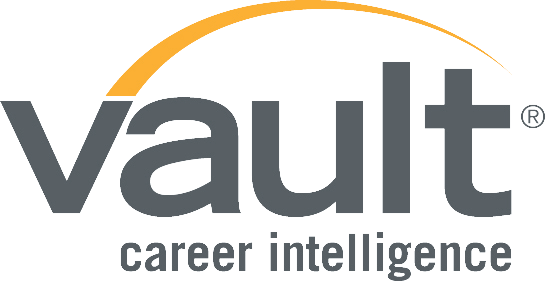 Vault.com is a website, which provides a ranking of firms in each different industry, ratings, and reviews of them, and job/internship programs. The data that they used are collected from directed surveys of active employees and enrolled students. The website was founded by an American entrepreneur named Mark Old man in 1996. Vault’s rankings and ratings are based on and cited by the New York Times, the Wall Street Journal, Bloomberg Business Week, Forbes, Fortune, Money and other media platforms. In addition to ratings and reviews of firms, the website offers background information of more than 5,000 of companies in approximately 120 industries. This helps recent graduates or anyone who looks for a job can build their careers. Vault also publishes the guideline for interviewing for different firms in different industries such as law, investment banking, accounting, technology, and marketing, etc.
[45]
Vault.com is a website, which provides a ranking of firms in each different industry, ratings, and reviews of them, and job/internship programs. The data that they used are collected from directed surveys of active employees and enrolled students. The website was founded by an American entrepreneur named Mark Old man in 1996. Vault’s rankings and ratings are based on and cited by the New York Times, the Wall Street Journal, Bloomberg Business Week, Forbes, Fortune, Money and other media platforms. In addition to ratings and reviews of firms, the website offers background information of more than 5,000 of companies in approximately 120 industries. This helps recent graduates or anyone who looks for a job can build their careers. Vault also publishes the guideline for interviewing for different firms in different industries such as law, investment banking, accounting, technology, and marketing, etc.
[45]
New Media in interview preparation
An interview is a very important part of the recruiting process. How to cast a successful interview? people need skills and practices. It's always true that practice makes perfect. When interview preparation breaks traditional ways and fall in new media scope, people find many resources are available at assistance by podcasting program. Search keyword interview on YouTube, people can find many recruiting managers sharing their experiences with people looking for jobs. They give advises and tips that really help interviewers to acknowledge different situations and develop a certain sense of proper reactions to ensure a good interview that can lead to an offer. Other than YouTube videos for a quick, visual understanding of interview scenarios, certain websites can also advise on resume, follow-up steps and templates to relieve newbies tension when entering into the job market.
Internship Interview Process
Timeline The typical timeline for a summer internship would be in the fall semester for many different industries. [46] Starting as early as September or as late as January, it various but due to technology, things have been quite expedited as compared to before. It is highly advisable to start looking and applying as a fall semester rolls around, with most programs targeting juniors or those in their penultimate year of study!
After months of networking and applying to internships, you finally get a callback from a company to setup a first round interview. Your question might be, what is a first round interview and how many rounds are there? This answer depends on the many types of companies. Generally, for business type internships at banks, accounting firms, etc, there can be 2-3 rounds of interviews.
Round 1: Screening This round is known as the "First Round Interview". The first round interview can take form in many ways. It will generally not be in person. It is normally in a phone call or a video chat. This is because they give first round interviews to many candidates and having the candidate come on-site is expensive for a first round interview.
The first round interview is generally a behavioral type interview. This is because they want to make sure you are the right fit for the company. You can find out types of behavioral questions by simply googling "Behavioral Questions"
Some of the most common questions include the following but can be reworded to sound similar. Tell me about yourself How do you handle a challenge? How do you handle conflict? Did you ever not meet your goals? Why? What do you do if you disagree with a co-worker? Give an example of how you set goals and achieve them. Describe a decision you made that wasn't popular and how you handled implementing it.
For more, please google behavioral questions.
'Round 2: Superday' The second round of the last round of interviews is known as the superday interview. This interview is almost always in-person. Most large firms will fly you out if you are far away and pay for any travel expenses including cab, hotel, bus or flight. It's an incredible experience that comes with an incredible amount of pressure.
Superday interviews including but not limited to behavioral interviews, technical interviews, case studies, professional panel and more. This is all up to the firm and how they structure this process.
Behavioral Interviews: This is another set of generic questions similar to the above. They want to make sure you are good with people and an all-around nice person to work with. If your position you are applying for is a client-facing person, they want to make sure you can comfortably speak with strangers.
Technical interviews: Technical Interviews are technical questions related to your field. If you are applying for an accounting internship, you should know how taxes work and exactly what the position requires. If you are applying for a software engineering position, you should know a language to do coding for. This is extremely common and is considered the hardest part of super day interviews.
Case Studies: Case Studies are not that common but do happen during super day interviews. The purpose of case-studies are to see how you interact with team members and how you perform in a professional environment. The case study will be related to the position are you applying to. An example can be, you and a group of interviewees are to perform an audit on how to improve an ATM machine. Case Studies are meant to be foreign and it is okay if you have no idea. You need to be able to explain your thoughts concisely and show that you can contribute, even if you don't know the right answer.
Post Interview Congratulations! You have finished some of the hardest interviews ever and now comes the worst part. The waiting. Waiting for a firm to get back to you can be torture. Firms will generally get back to you within a week or two weeks. There are some who will let you know the night of the interview and some who will not let you know for a few weeks.
Be sure to send your thank you emails and best of luck!
References
<references>
- ↑ “Number of Employers Using Social Media to Screen Candidates Has Increased 500 Percent over the Last Decade.” CareerBuilder, https://www.careerbuilder.com/share/aboutus/pressreleasesdetail.aspx?ed=12/31/2016&id=pr945&sd=4/28/2016.
- ↑ “Number of Employers Using Social Media to Screen Candidates Has Increased 500 Percent over the Last Decade.” CareerBuilder, https://www.careerbuilder.com/share/aboutus/pressreleasesdetail.aspx?ed=12/31/2016&id=pr945&sd=4/28/2016.
- ↑ Brown, Victoria R., and E. Daly Vaughn. "The writing on the (Facebook) wall: The use of social networking sites in hiring decisions." Journal of Business and psychology 26.2 (2011): 219.
- ↑ Sánchez Abril, Patricia, Avner Levin, and Alissa Del Riego. "Blurred boundaries: Social media privacy and the twenty‐first‐century employee." American Business Law Journal 49.1 (2012): 63-124.
- ↑ http://www.endgamebusiness.com/youre-the-face-of-the-company/
- ↑ http://www.cnet.com/how-to/remove-delete-yourself-from-the-internet/
- ↑ http://www.npr.org/templates/story/story.php?storyId=6522523&sc=emaf?storyId=6522523&sc=emaf
- ↑ “Recruitment & Selection Hiring Process”, “University of California, Riverside, Last modified on 23 June, 2013. Retrieved on 6 July 2014.
- ↑ https://cvviz.com/blog/recruitment-marketing-applying-digital-marketing-methods/
- ↑ Roos, Dave. “How LinkedIn Works”, howstuffworks, Retrieved on 6 July 2014.
- ↑ “The Advantages And Benefits of Creating A LinkedIn Profile”, RedStarResume, 23 July 2012. Retrieved on 6 July 2014.
- ↑ "How to Power Your Professional Networking Through LinkedIn", Forbes, 29 March 2012. Retrieved on 9 May 2015.
- ↑ https://www.linkedin.com/pulse/how-social-media-can-affect-your-career-pratik-bang
- ↑ https://www.linkedin.com/pulse/20140708162049-7239647-16-tips-to-optimize-your-linkedin-profile-and-enhance-your-personal-brand/
- ↑ https://www.linkedin.com/pulse/thanks-linkedin-my-dream-job-found-me-when-i-looking-dawn-edmiston/
- ↑ Colao, J.J. “Who Would Recruit On Facebook? Try Pepsi, Gap, AIG And Oracle...”, Forbes, 2 July 2013. Retrieved on 6 July 2014.
- ↑ King, Jennifer “Why do Recruiters look at your Social Media Profiles?”, Recent Grad. Retrieved on 6 July 2014.
- ↑ https://www.ijsr.net/archive/v5i1/NOV153196.pdf
- ↑ “Twitter Statistics”, Statistic Brain, 1 January, 2014. Retrieved on 5 July 2014.
- ↑ Black, Tiffany. “How to Use Twitter as a Recruiting Tool”, Inc., 19 May, 2010. Retrieved on 4 July 2014.
- ↑ Weiss, Tara. “Use Twitter To Find A Job”, Forbes, 16 April 2010. Retrieved on 4 July 2014.
- ↑ https://www.businessnewsdaily.com/8750-work-with-staffing-agency.html
- ↑ Bennett, Shea. “92% of Companies Use Social Media For Recruitment”, mediabistro, 16 October 2013. Retrieved on 6 July 2014.
- ↑ "In Hiring, a Friend in Need Is a Prospect, Indeed", NYTimes, 27 Jan 2013. Retrieved on 11 May 2015.
- ↑ https://www.topresume.com/career-advice/14-ways-to-leverage-your-linkedin-profile-during-your-job-search
- ↑ http://www.monster.com/about
- ↑ http://www.indeed.com/about
- ↑ http://www.simplyhired.com/about/our-story
- ↑ http://www.careerbuilder.com/share/aboutus/default.aspx
- ↑ http://www.glassdoor.com/about/index_input.htm
- ↑ https://www.glassdoor.com/blog/glassdoor-named-red-herring-top-100-finalist-social-media-innovation/
- ↑ https://www.bloomberg.com/news/articles/2018-05-09/japan-s-recruit-buying-jobs-website-glassdoor-for-1-2-billion
- ↑ http://www.linkup.com/
- ↑ http://www.wjlife.com/
- ↑ http://www.dice.com/
- ↑ https://www.wayup.com/
- ↑ https://theundercoverrecruiter.com/best-recruiting-apps/
- ↑ https://techcrunch.com/tag/jobr/
- ↑ https://uncubed.com/learn
- ↑ https://yello.co/
- ↑ https://www.sparkhire.com/video-interviews
- ↑ http://www.baruch.cuny.edu/careers/students/stu_starrted.html
- ↑ http://drexel.edu/~/media/Images/scdc/careerServices/career-counseling.ashx?h=300&w=570&hash=582163C549BE6C388B1AE9AB0AFA7CB66AD89010
- ↑ http://www.baruch.cuny.edu/careers/students/
- ↑ http://www.vault.com/about-us/company-overview
- ↑ https://carey.jhu.edu/uploads/files/1_16_15_recruiting_timelines.pdf

